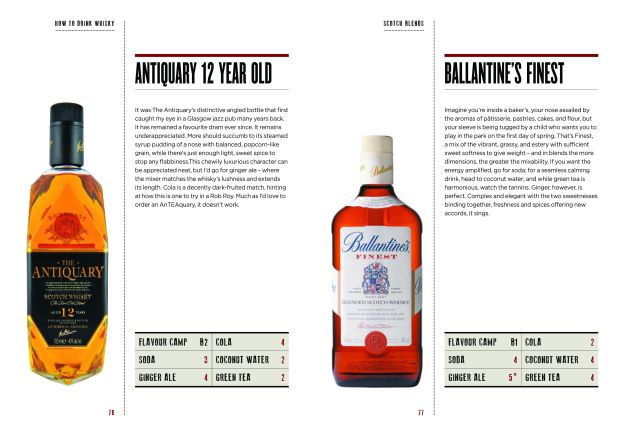The debate may still be out on whether it’s spelled whisky or whiskey, but for the sake of the book we’re talking about in this post, we’ll go with whisky, since it’s called “Whisky: The Manual”. It’s pretty evident that we like manuals here at The Manual (just look at our name), and Dave Broom devised one that’s pretty useful for both whisky aficianados and novices alike. Broom spoke to The Manual about creating the book and why we should forget everything we assume about whisky.

Because no one had written about how to drink whisky. There are great books on history, but they tell you how an industry was formed. There are great books on production, but they just stop at how it is made. There are tasting books, but they tell you what the neat spirit is like. As a result, people remain intimidated by whisky and the rules, which have grown up around it and restricted its enjoyment. In fact when I looked at the real history of how whisky has been drunk, it became obvious that at any point in its 500+ years history when it’s been popular it’s been mixed, drunk long, or flavored.
Showing how whisky can be drunk in many ways — with mixers, in cocktails and punches (and neat) opens up new possibilities for the drink, it brings in new drinkers, it widens the occasions when you can enjoy whisky.
Everyone seems to be drinking whisky these days, whether in a Manhattan or straight up. Why is it so popular?
People are looking for flavor — be that in food, wine, or white spirits. Look at the renaissance of gin. They are also looking for drinks which are real and not contrived. Whisky has heritage, provenance, it is rooted in place and is made by real people — and it tastes great!
What are the biggest myths about whisky?
That it’s a drink for men of a certain age, to be taken after dinner, and only drunk straight up. This means that young people aren’t allowed to drink it, women aren’t allowed to drink it, that you have to wait until a specific time and occasion to enjoy it, that you will probably grimace when you sip it because it’s strong. Now that, I’d argue, is not a particularly smart way to go about trying to sell something! The other myth is that blends are inferior to single malts. Not true. Whisky is for everyone, it is for every time, it is versatile, it has the widest range of flavours of any aged spirit. There is a whisky out there for you.
What is your favorite whisky and the best way to drink it?
Impossible to say. There’s whisky being made in almost every country in the world these days – a vast range of flavors and styles. It is endlessly fascinating. I am a big fan of the Highball as an aperitif: whisky and soda, or ginger ale. Smoky whiskies with soda are wonderfully refreshing, Irish or Canadian with ginger ale — magnificent. That’s what the book is about; finding new ways to maximize your enjoyment. I tried 102 whiskies five ways. I can’t pick out a favorite from that!

Every distillery is unique. That’s what’s exciting about whisky — a spirit made from cereal and aged in wood – yet there’s a seemingly infinite variety of flavours. Even distilleries next door to each other doing essentially the same thing will make different whiskies. Distillers are using different roasts of barley, different yeasts, different smokes — from woods, to nettles to, believe it or not, sheep dung. They are asking, “what is this thing called whisky?,” and coming up with compelling answers. I genuinely believe that we are living in the most exciting period of whisky’s evolution.
What’s the strangest way you’ve seen it mixed?
I’m pretty open-minded. If it works it works!
What are your whiskey suggestions for someone to get for his girlfriend, mother, father, best friend and boss?
I don’t believe that there is a woman’s palate and a man’s palate. Neither do I believe in crawling to my boss (if I had one) by giving him something expensive. No. The important thing when choosing whisky for someone is finding the tastes and flavors they like.
I know women who love big smoky whiskies, and men who hate them. It is personal. If I suggested that women only like things which are light sweet and pink I’d be murdered!
What I do is ask people what wine they like. Then I’ll find a whisky with a similar flavor profile to that wine — delicate and floral for Sauvignon Blanc and Riesling lovers, buttery for those who like Chardonnay, big and bold for red wine lovers. The book puts whiskies into flavor camps so you can find out the flavors and styles which appeal to you. I’ll think about what time of day it is. If it’s a hot afternoon then I’m going to suggest a highball. If it is after dinner, then something richer with a splash of water.
Free your mind! Reject orthodoxies! Enjoy whisky!
“Whisky: The Manual,” $15.19 at amazon.com.


